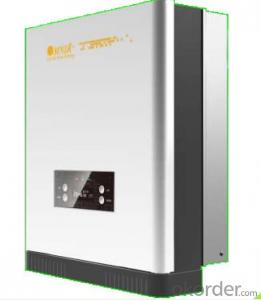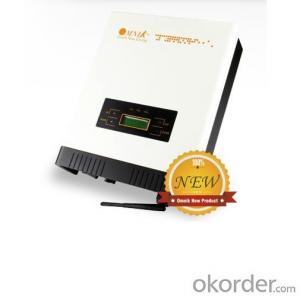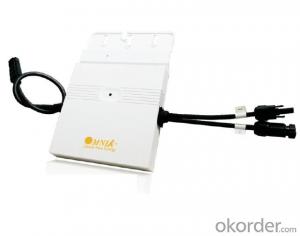On grid solar inverter Omniksol-2.0k-TL2
- Loading Port:
- Shanghai
- Payment Terms:
- TT OR LC
- Min Order Qty:
- 12 pc
- Supply Capability:
- 3000 pc/month
OKorder Service Pledge
OKorder Financial Service
You Might Also Like
Omnik new energy solar inverter
Omniksol-2.0k-TL Photon Efficiency up to 3kW
in the world------ Photon tested Jan. 2012.
Omniksol-2.0k-TL2
1.Futures
Built-in GPRS as option
Built-in Wifi as option
External inductor and built-in fan
smaller and lighter, 2k only 9.6kg
High performance DSP for algorithm control
VDE-AR-N 4105 certification
Self-developed topology design
Multi-button touch interface
LCD screen visible at night
10 years warranty(5~15 years as option)
2.Technical data:

3.solar inverter certificate
EN 61000
VDE 0126-1-1
C10/11
G83/2
UTE C15-712-1
AS4777
CQC
CE10-21
EN50438
4.product outlook
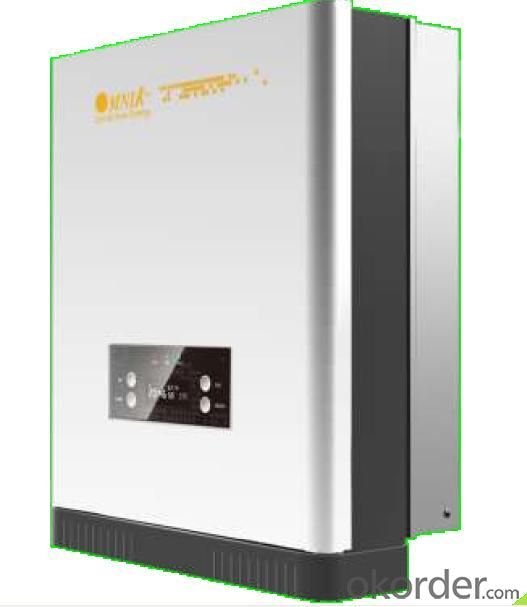
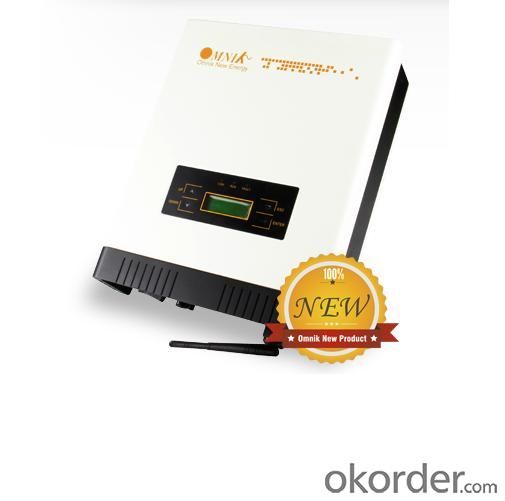
1. How long will my inquiry get response?
Your inquiry related to our products or prices will be replied within 24 hours.
2. Can I get professional service and suggestion?
Well-trained and experienced staffs to answer all your questions in fluent English.
3. Do you accept OEM or customized design?
OEM & ODM, any your customized lightings we can help you to design and put into product.
4. What if I need specific design?
Distributorship are offered for your unique design and some our current models.
- Q:Can a solar inverter be used in areas with unstable grid power?
- Yes, a solar inverter can be used in areas with unstable grid power. Solar inverters are designed to convert the DC power generated by solar panels into AC power that can be used by household appliances or fed back into the grid. In areas with unstable grid power, solar inverters can provide a reliable and consistent power supply by utilizing the energy stored in the solar panels or batteries. This ensures a continuous power supply, even during grid power fluctuations or outages.
- Q:How does a solar inverter handle voltage rise in case of low load conditions?
- A solar inverter handles voltage rise in case of low load conditions by using a feature called voltage regulation. It continuously monitors the voltage level and adjusts the power output accordingly to prevent any excessive rise in voltage. This helps maintain a stable and safe voltage level, even during low load conditions.
- Q:What is the maximum power output of a solar inverter?
- The maximum power output of a solar inverter can vary depending on its size and model. Generally, residential solar inverters have a power output ranging from 2 kilowatts (kW) to 10 kW, while commercial and utility-scale inverters can have power outputs exceeding 1 megawatt (MW).
- Q:Can a solar inverter be used in areas with high levels of dust or pollution?
- Yes, solar inverters can be used in areas with high levels of dust or pollution. However, it is important to regularly clean and maintain the inverters to prevent the accumulation of dust or pollutants that could potentially impact their performance or lifespan.
- Q:How does a solar inverter handle fluctuations in solar panel output?
- A solar inverter handles fluctuations in solar panel output by constantly monitoring the incoming DC power from the panels and adjusting its own output to match the required AC power demand. It utilizes Maximum Power Point Tracking (MPPT) technology to optimize the energy conversion process, ensuring that the inverter extracts the maximum power from the solar panels even if the output fluctuates due to factors like shading or varying sunlight intensity. This allows for a stable and reliable power supply to the electrical grid or connected devices.
- Q:What is the maximum power capacity that a solar inverter can handle?
- The maximum power capacity that a solar inverter can handle depends on its specific model and design. In general, solar inverters range in power capacities from a few hundred watts to several megawatts.
- Q:What is the role of voltage regulation in a solar inverter?
- The role of voltage regulation in a solar inverter is to ensure that the voltage output from the solar panels is converted and maintained at a stable and appropriate level for efficient and safe operation of electrical devices or for grid connection. This regulation helps to optimize the performance of the solar inverter and prevents voltage fluctuations that could potentially damage or disrupt the functioning of connected equipment.
- Q:How does a solar inverter communicate with monitoring systems?
- A solar inverter communicates with monitoring systems through various means such as wireless technologies like Wi-Fi, Bluetooth, or Zigbee, or through wired connections like Ethernet or RS485. These communication channels allow the inverter to transmit important data and performance metrics to the monitoring systems in real-time.
- Q:Can a solar inverter be used with solar-powered streetlights?
- Yes, a solar inverter can be used with solar-powered streetlights. A solar inverter is responsible for converting the direct current (DC) produced by solar panels into alternating current (AC) that can be used to power various electrical devices, including streetlights. By integrating a solar inverter into the system, solar-powered streetlights can efficiently utilize the energy captured from the sun to illuminate the streets.
- Q:Can a solar inverter be used in a solar-powered irrigation system?
- Yes, a solar inverter can be used in a solar-powered irrigation system. A solar inverter is responsible for converting the direct current (DC) produced by solar panels into alternating current (AC), which is necessary for powering electrical devices such as pumps and motors in an irrigation system. By connecting the solar panels to a solar inverter, the energy generated by the sun can be efficiently utilized to operate the irrigation system, making it a sustainable and cost-effective solution for agricultural purposes.
1. Manufacturer Overview |
|
|---|---|
| Location | |
| Year Established | |
| Annual Output Value | |
| Main Markets | |
| Company Certifications | |
2. Manufacturer Certificates |
|
|---|---|
| a) Certification Name | |
| Range | |
| Reference | |
| Validity Period | |
3. Manufacturer Capability |
|
|---|---|
| a)Trade Capacity | |
| Nearest Port | |
| Export Percentage | |
| No.of Employees in Trade Department | |
| Language Spoken: | |
| b)Factory Information | |
| Factory Size: | |
| No. of Production Lines | |
| Contract Manufacturing | |
| Product Price Range | |
Send your message to us
On grid solar inverter Omniksol-2.0k-TL2
- Loading Port:
- Shanghai
- Payment Terms:
- TT OR LC
- Min Order Qty:
- 12 pc
- Supply Capability:
- 3000 pc/month
OKorder Service Pledge
OKorder Financial Service
Similar products
New products
Hot products
Hot Searches
Related keywords
